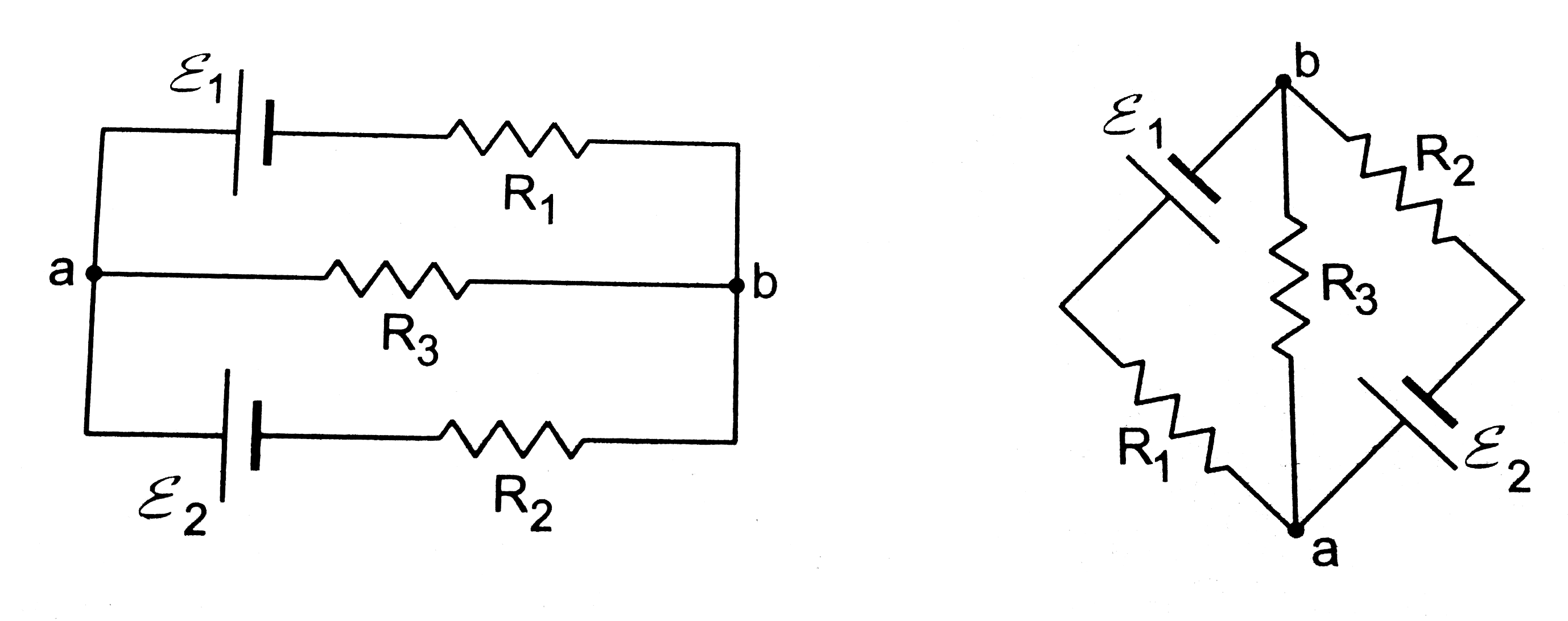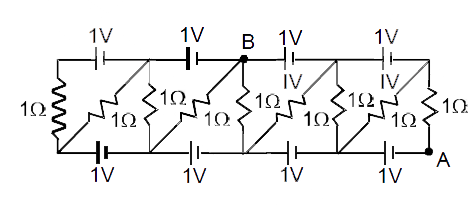Find the potential difference (VB−VD) in balanced condition if 2 A current is flowing through the circuit:
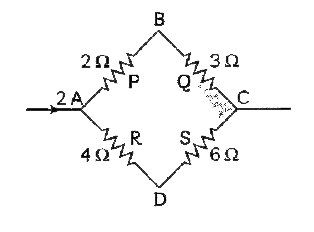
4 V
6 V
12 V
Zero
The correct Answer is:D
Zero
Explanation PQ=RS
Hence VB−BD=0
Topper's Solved these Questions
- BOOK - EDUCART PUBLICATIONCHAPTER - SAMPLE PAPER 3EXERCISE - SECNTION -C6videos
SAMPLE PAPER 3
- BOOK - EDUCART PUBLICATIONCHAPTER - SAMPLE PAPER 3EXERCISE - SECNTION -C6videos
SAMPLE PAPER 3
- BOOK - EDUCART PUBLICATIONCHAPTER - SAMPLE PAPER 2EXERCISE - SECTION-C6videos
SAMPLE PAPER 2
- BOOK - EDUCART PUBLICATIONCHAPTER - SAMPLE PAPER 5EXERCISE - SECTION - C6videos
SAMPLE PAPER 5
Similar Questions
Knowledge Check
- Question 1 - Select One
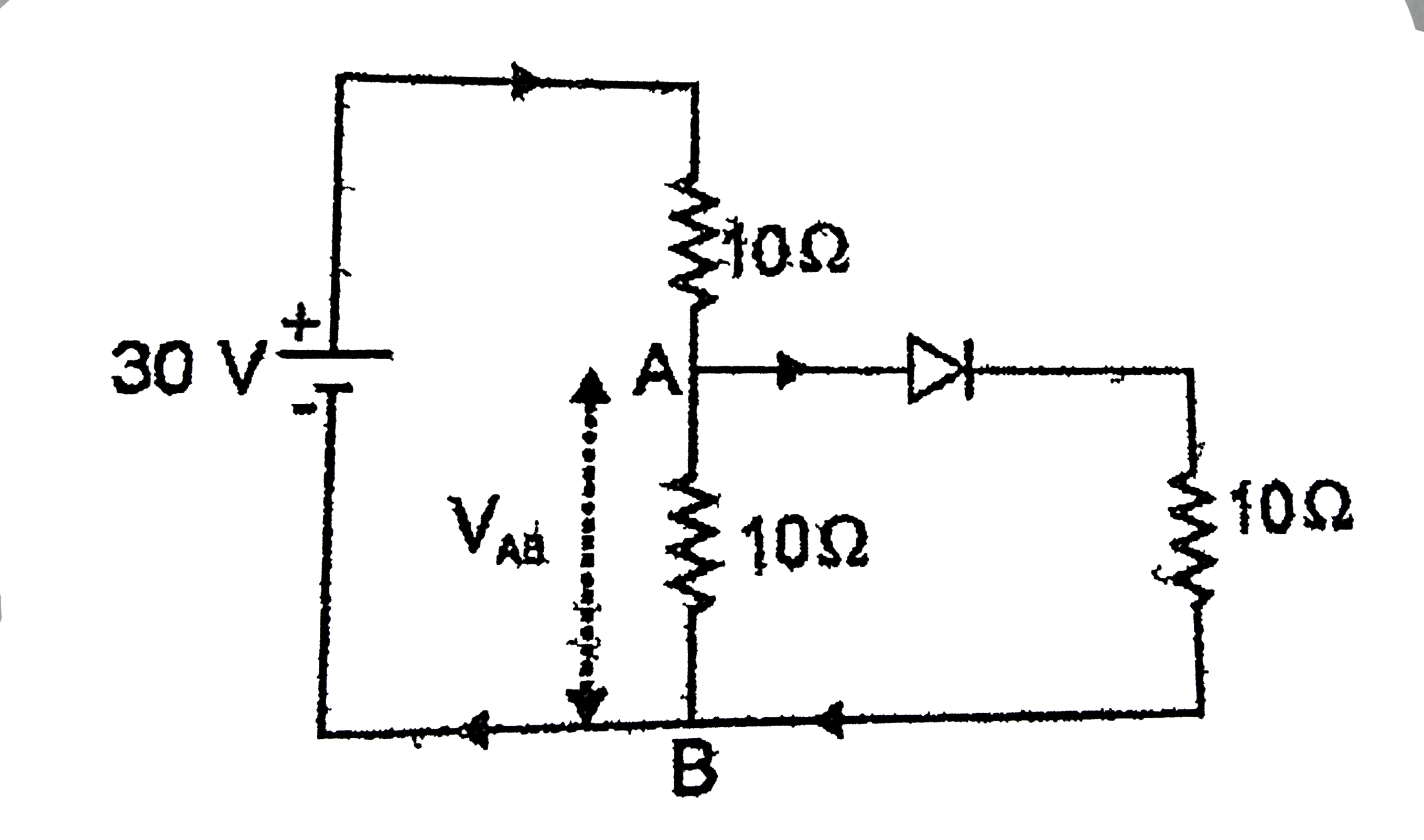
For given circuit potential difference VAB isA10 VB20 VC30 VDnone - Question 2 - Select One
The potential difference is 12 V and the work done is 60 J . Find the electric charge that flows through the circuit .
A0.5 CB50 CC500 CD5 C - Question 3 - Select One
The potential difference V across and the current I flowing through an instrument in an AC circuit are given by:
V=5cosωt volt
I=2sinωt Amp.AzeroB5 wattC10 wattD2.5 watt
Find the potential difference between points A and B (VB−VA) in the network
 View Solution
View SolutionFind the potential difference VA−VB between points A and B of the circuit shown in.
 . View Solution
. View SolutionIn the circuit (Fig.) what is potential difference VB−VA (in V) when current I is 5A and is decreasing at the rate of 103As−1
 View Solution
View SolutionAB is a part of circuit. Find the potential difference VA−VB if
a. current I=2A and is constant,
b. current i=2A and is increasing at the rate of 1As−1,
c. current i=2A and is decreasing at the rate 1As−1,
 View Solution
View Solution(a) Find the potential difference between A and B
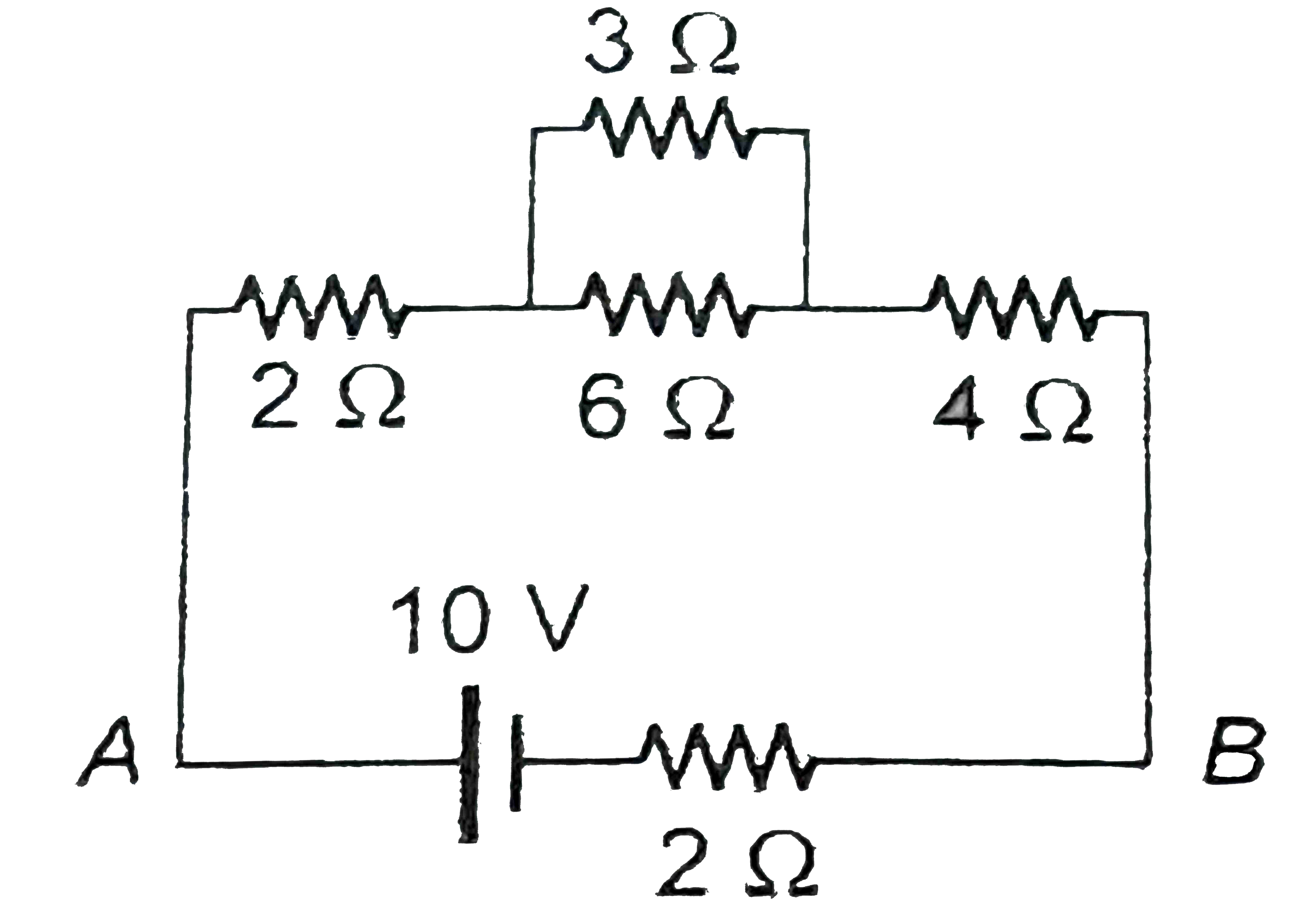
(b) Calculate the current flowing in the circuit and the potential difference across terminals of each cell.
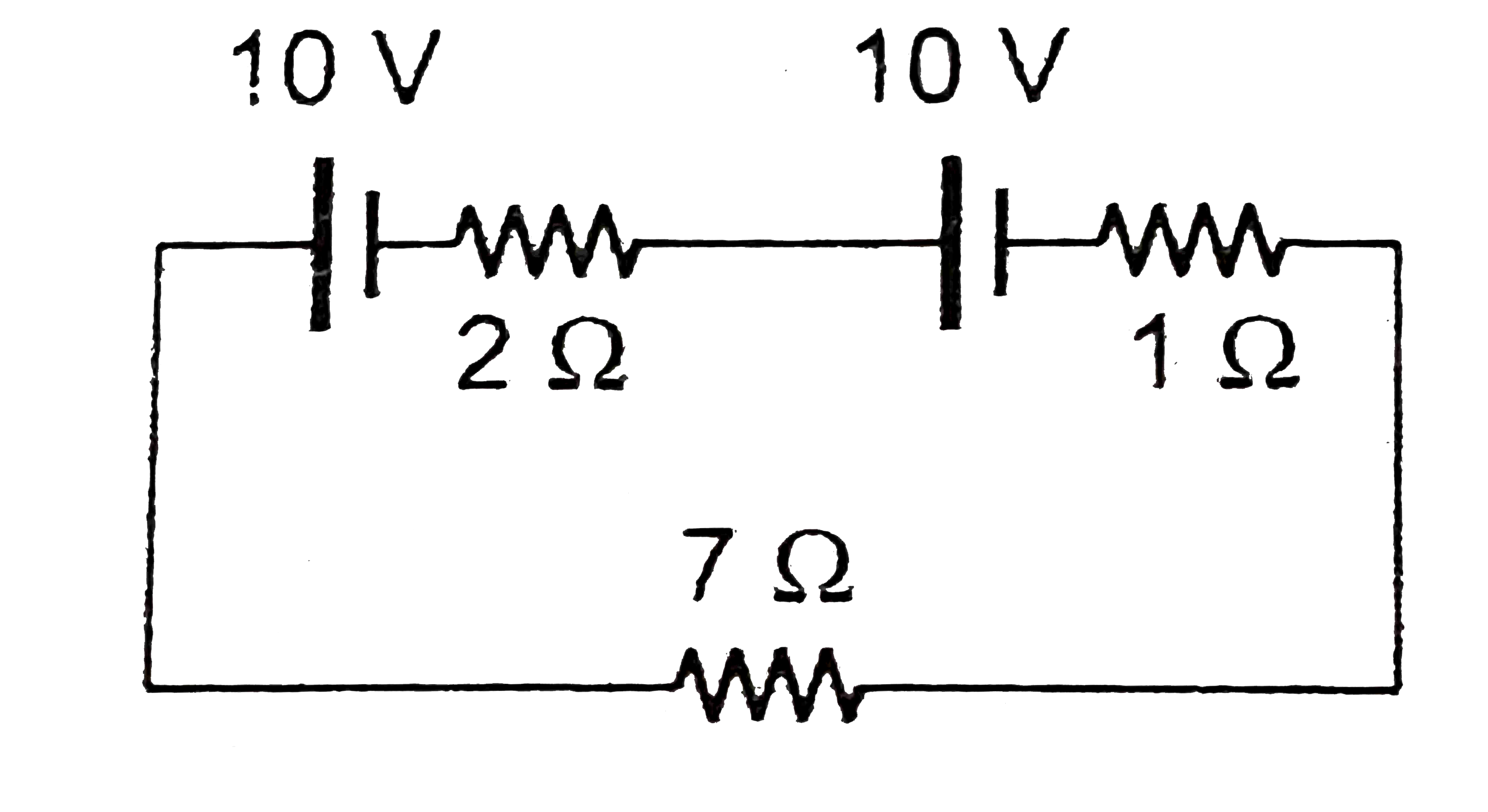
( c) Calculate the potential difference across terminals of each cell.
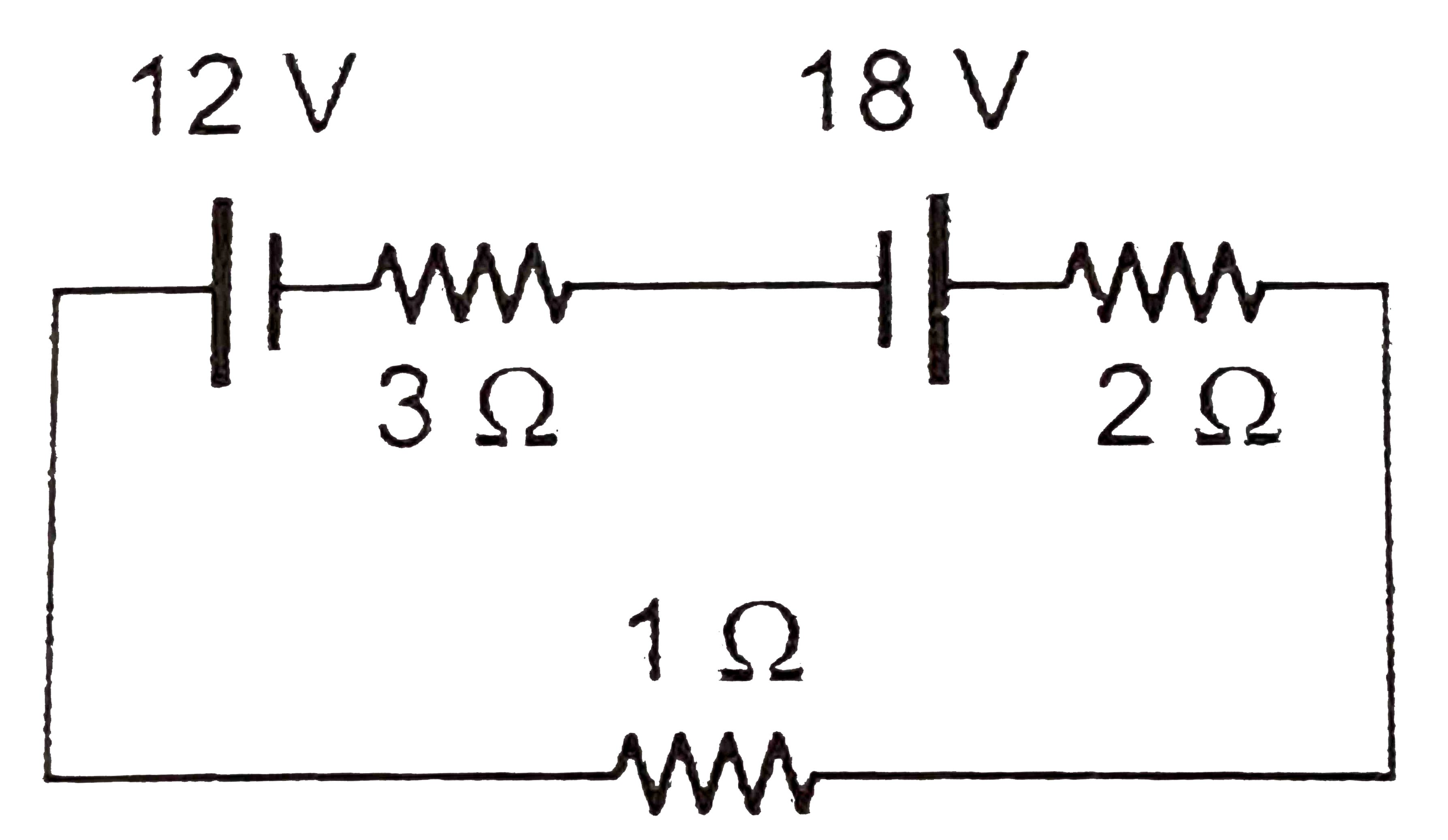
(d) Calculate the potential difference between A and B
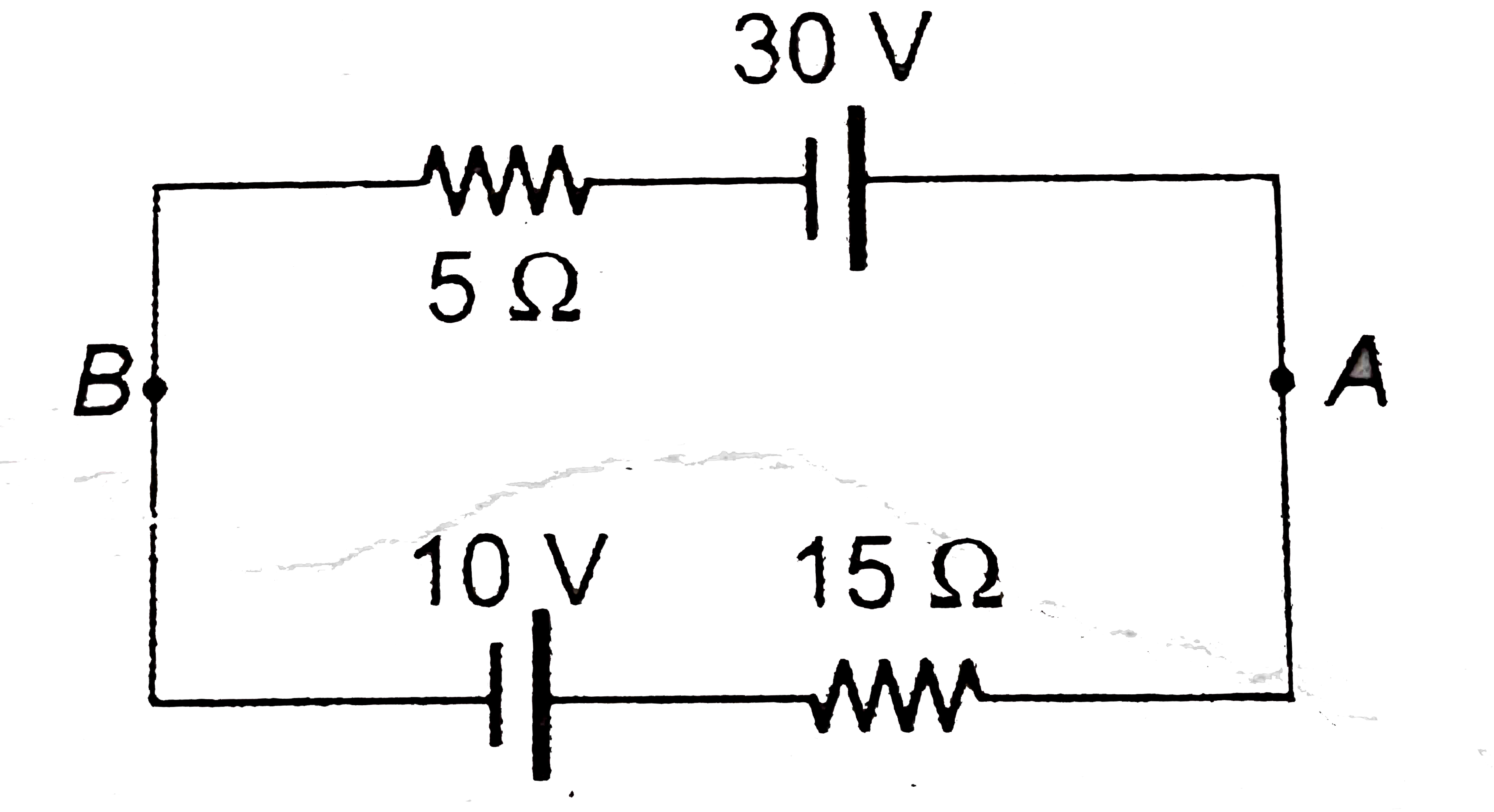
( e) Calculate the current in each resistor and terminal potential difference across each cell.

(f) Calculate potential difference across each cell.
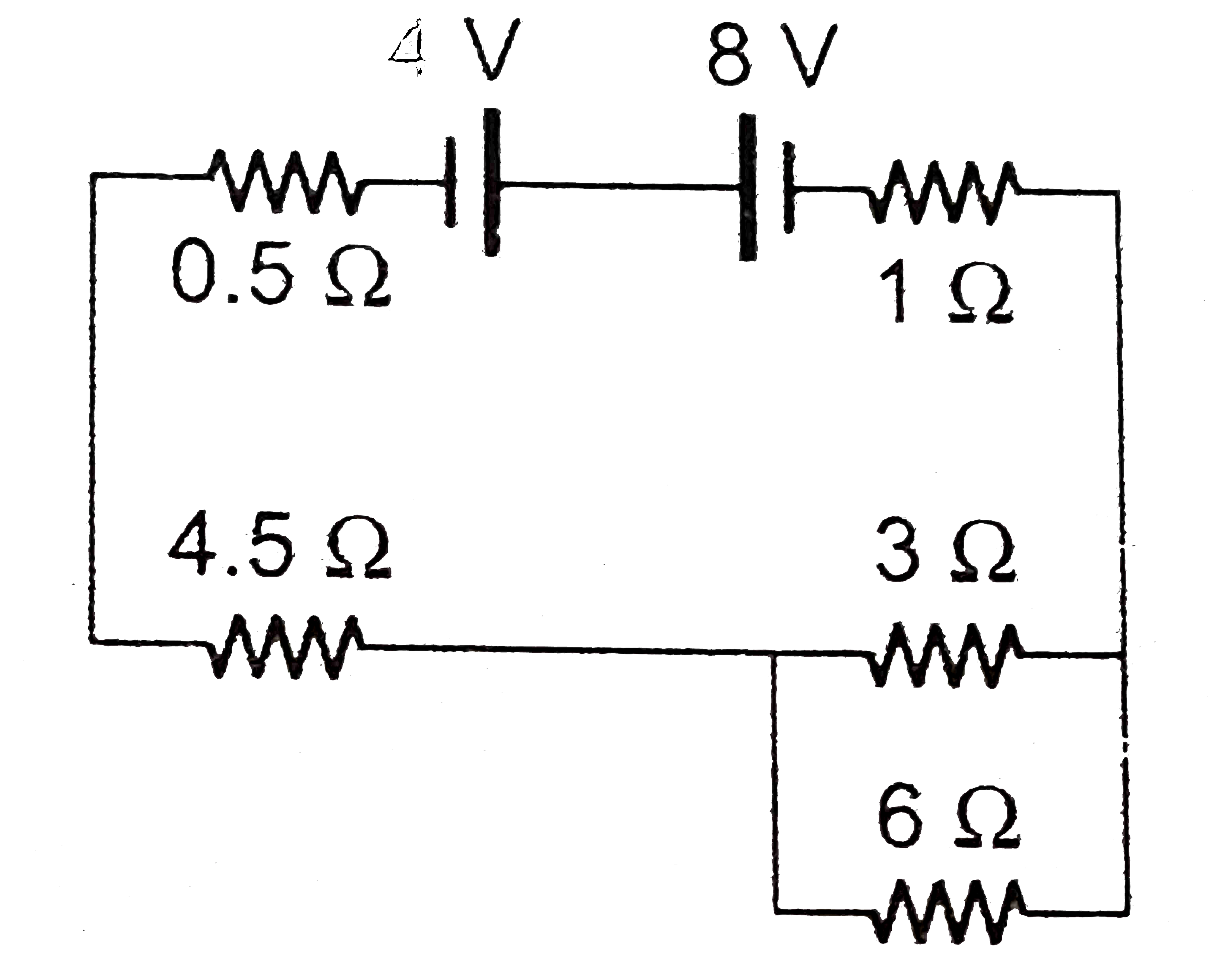
(g) A battery of 6 cells each of emf 2V and internal resistance 0.5Ω is being changed by DC mains of emf 220V by using an external resistance of 10Ω. Calculate.
(i) the charging current
(ii) the potential difference across the battery.
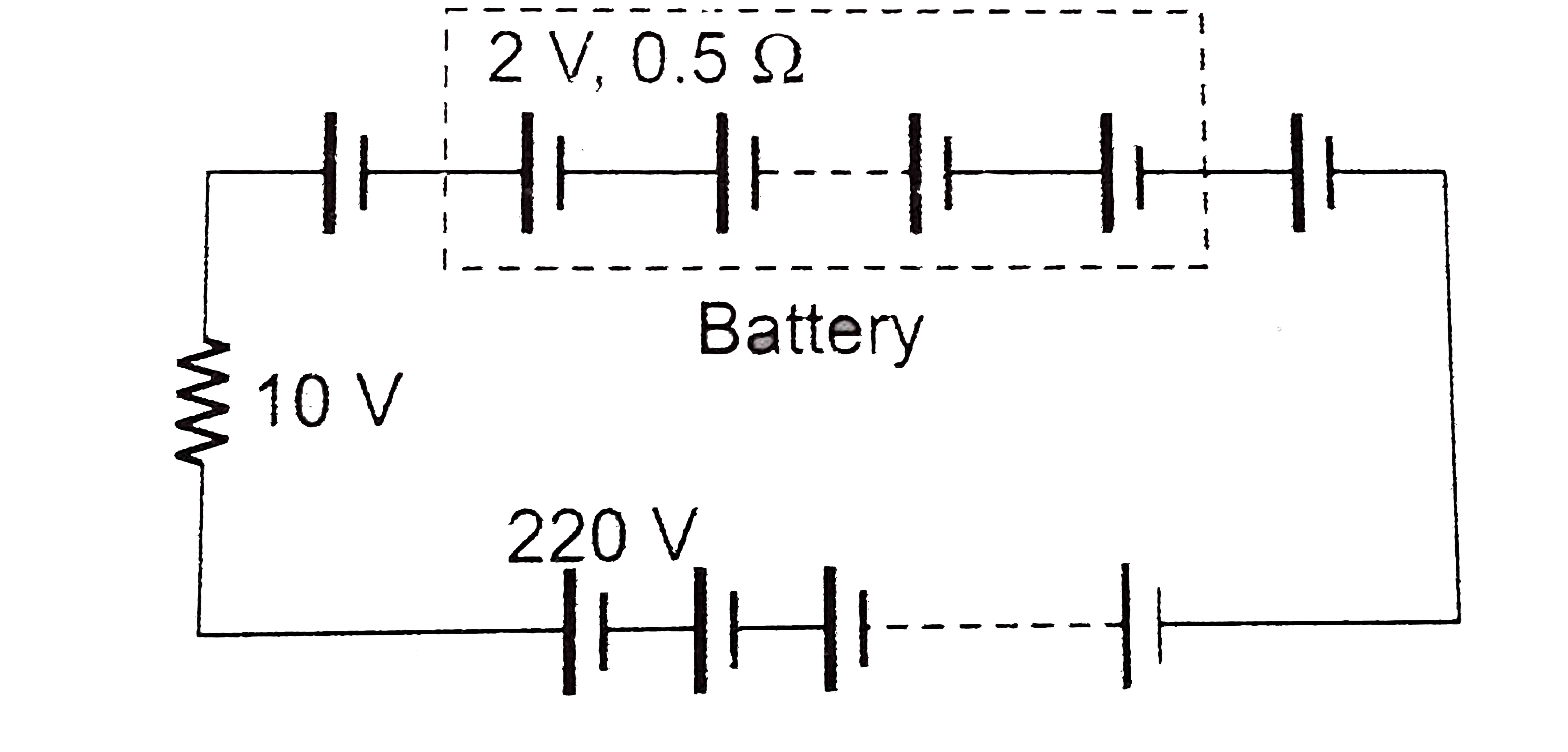 .View Solution
.View Solution


